Top 10 Shopify UX Components to Explore Today
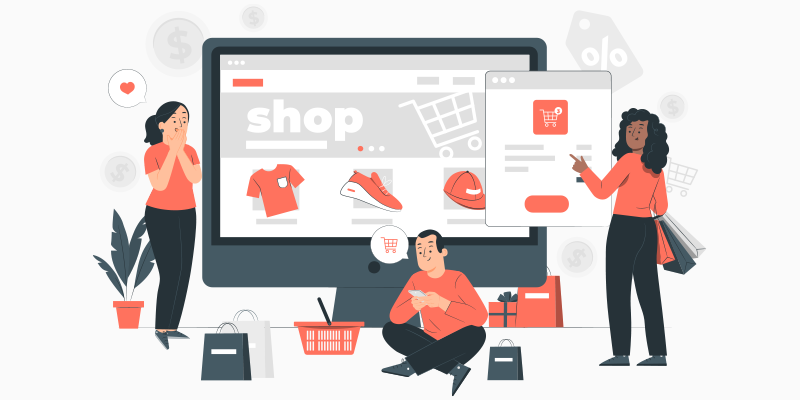
Featured Image: Freepik.com/storyset
Everyone shops online and, these days, eCommerce is just a fact of life. With more online sellers joining the game than ever before, selling on a platform like Shopify can mean tough competition. After all, there are more than half a million Shopify stores in operation, and more joining each month.
How can online sellers beat the odds and make a success of their store? After getting a professional website designed, one of the key aspects that business owners need to focus on is user experience.
UX and its Connection to Shopify’s Success
Many researchers have tried to pinpoint the main reason why a particular Shopify store may or may not succeed. From poor customer service to complex navigation to low-quality products and layout, the overall reason boils down to simply that of a poor user experience. The role of UX in eCommerce store conversions is very prominent and you need to consider that above anything else.
After all, any of these reasons can interfere with the buyer’s journey.
- Can’t find the product they’re looking for
- Can’t find the shopping cart
- Isn’t incentivized to follow through on purchases
- Doesn’t like the look of the site
- Doesn’t find the store easy to use
- Sees no call to action
Creating a well-designed Shopify site is more than just a case of making sure that it’s nice to look at — though the aesthetics are important, too. Design-driven companies have been tracked and proven to perform well over 200% more effectively than those that are not. And your logo is an integral design factor. Look for minimal logos for your startup and incorporate the brand identity design within your Shopify store in a way that grabs the attention of visitors immediately.
Pay attention to these ten components for a high-performing and high-converting Shopify store.
- Detailed product information
- Ease of use
- Search capabilities
- Familiarity
- User control
- Well-branded visuals
- Incentivization
- Accessibility
- Shipping options
- Customer reviews
Let’s go through them individually and discuss the importance of each component and how to leverage them for the most effective UX.
Detailed Product Information
The product layout is key for a good user experience. Not only does it provide the basic details that tell your potential customer whether the product will fulfill their need or not, but when done well, your product layout should draw the eye and attract attention.
Elements of a good product layout include the product photo, product name, and description. The basic layout of each product varies depending on the overall appearance of the online platform. So it’s a good idea to visualize the result when building your eCommerce store, and here are a few important things to remember.
- Practice good product photography: Make sure the product is staged appealingly and clearly — a professional product photographer may be necessary for this, though you can always follow expert tips if you want to do the photography yourself. Max out the size of the image within the layout, and include zoom capabilities so your visitor can investigate details further.
- Choose an effective product name: Product names are often laced with keywords — this is good SEO. Still, a haphazard mishmash of keywords and phrases is less than memorable, not to mention not exactly appealing. Try to limit your keyword inclusion and arrange them in a way that is descriptive, eye-catching, and informative.
- Craft an excellent description: Again, it’s tempting to simply plug in a series of keywords and phrases and call it good, but we tend to tune out overly done SEO paragraphs. Keywords in and of themselves are not particularly descriptive unless used judiciously.
Pick and choose which ones are most effective, and make sure to include the details that your site visitor needs to know such as product details, size and color options, materials, uses, and complementary products.
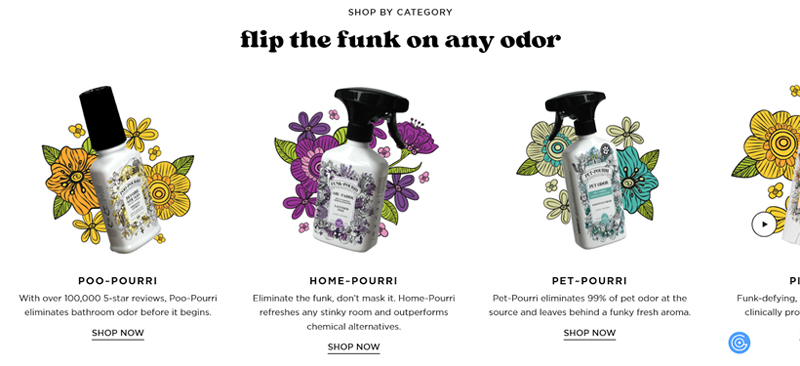
Image Source: Pourri
Ease of Use
This UX component isn’t a matter of including any single feature but centers around the flow of the site as a whole. The last thing you want is to frustrate your visitors to the point where they not only don’t complete the buying process but never return to your store again.
Here are a few important aspects of ensuring ease of use in your shop design.
- Streamline your navigation: Don’t overwhelm your content with too many pages and options.
- Make sure that action buttons are not only easy to use but also easy to see to begin with. Choose colors for the “buy now” and “add to cart” buttons that will make them stand out well against your background.
- Ensure that the cart is visible and accessible from every page: It’s confusing and a little infuriating when a potential buyer can’t find the cart easily from every product page; often, consumers want to review what they’ve already added to the cart and compare products to help them decide which one they want to buy.

Shopify
Search capabilities
Speaking of ease of use and navigation, the inclusion of a good search function is a vital part of elevating your UX. It’s one of the key UX elements for boosting eCommerce conversions. Please note that this isn’t just “a search function,” but a good search function. A search bar that doesn’t return the intended results is not only next to pointless, it’s irritating.
Refine your search capabilities by double-checking your use of accurate keywords in product names and descriptions. Offer prompts based on popular searches, and add products similar to those searched for into the suggested results.
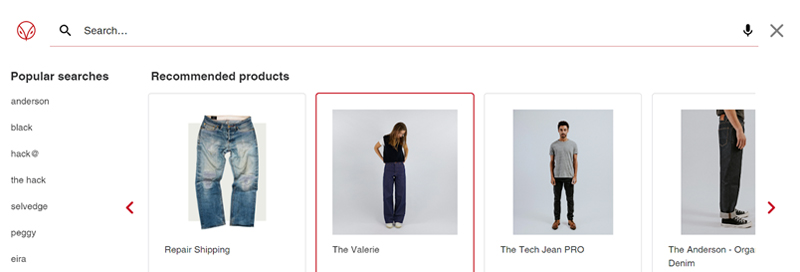
Image Source: hiutdenim.co.uk
Familiarity
Another UX component that is made up of the site as a whole, rather than a single feature, is the question of familiarity. Of course, products change frequently, and some adaptability is necessary for a successful Shopify site. But whenever possible, keep the basic layout and function of your site as consistent as you can.
Consistency equals comfort for your customers, and a comfortable customer is more likely to return for another store experience.
User control
Another aspect that ties in the overall UX with navigation and familiarity is the ability to offer control to the user. Let them customize their experience whenever possible.
A key way to do this is to give them checkbox options. For example, a clothing store may invite a customer to choose their sizes, and then tailor search results for the individual.
Of course, this option may not suit your store, depending on the products that you offer. However, allowing visitors to modify and personalize their experience whenever possible is an excellent example of good UX.
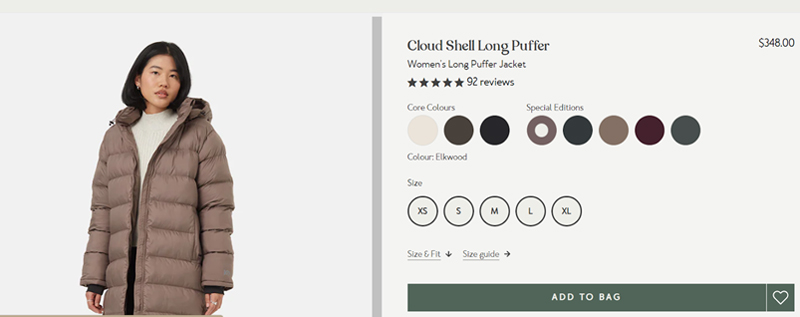
Image Source: tentree.ca
Well-branded visuals
Along with familiarity, the use of branding materials like eCommerce logos is an effective way to not only reassure the visitor that they’re right where they want to be but also build the perceived trustworthiness of your brand.
A well-designed dynamic logo, especially one that is specifically tailored to your ecommerce store — such as a simplified iteration of your usual logo — is a staple to add to each page of your site. Make sure that the placement is the same to create visual coherency along with consistent branding.
That same logo is also useful to include in your product images, when possible — not to mention in the packaging itself.
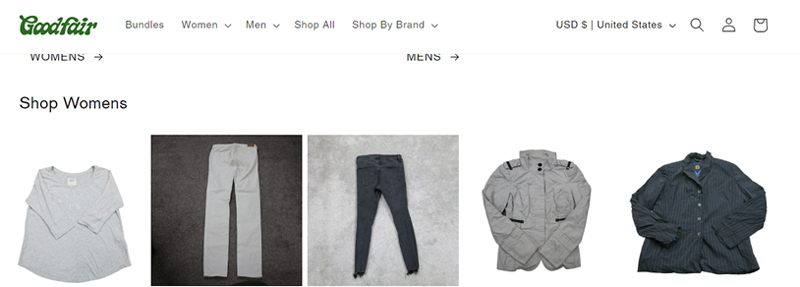
Image Source: goodfair.com
Incentivization
Most consumers not only need a good reason to buy a product, they need a good reason why they should buy this specific product, from this specific shop. Remember, if you have a Shopify site, you compete with half a million other ecommerce storefronts!
To incentivize your customers to follow through on their impulse to buy, make sure the benefits of the product are seen and understood. This ties back to the product layout and information. On top of that, encourage your visitors to see the benefits of buying from your site. Include clear calls to action in your copy. Offer discounts whenever possible. Utilize the fear of missing out by putting a time limit on sales. And remember that you can generate leads by providing a discount for new site users upon sign-up.
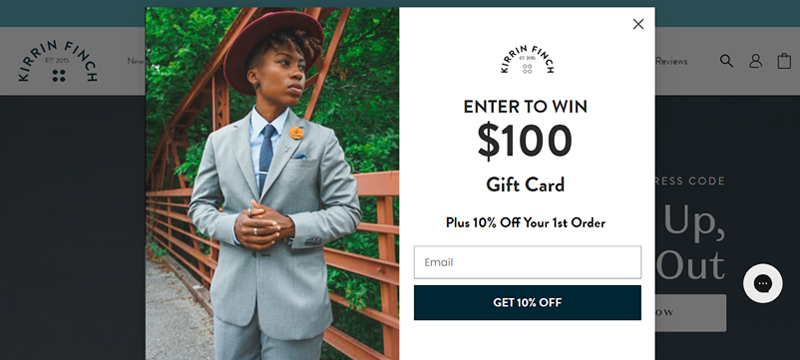
Image Source: kirrinfinch.com
Accessibility
The most effective user experience is one that works for everyone. This can be tricky, especially considering that so many potential consumers are dealing with health challenges that impact their ability to utilize platforms like Shopify. The World Health Organization reports that more than 250 million people are visually impaired, more than 450 million have hearing loss to some degree, and 200 million have intellectual disabilities. How can you develop a user experience that caters to everyone?
It’s impossible to hit every single demographic box, but some steps can be reasonably taken.
- Choose background and text colors that make your content as easily read as possible. High contrast is important but make sure that you are aware of color moods in graphic design so you can pick the right combinations.
- Offer translations to commonly used languages whenever possible. This may not always be practical, and of course, a Shopify site means that you’re selling online — your customers may be scattered all over the world. However doing your best to make your content accessible to any language in your area is a good business practice for any store, whether online or in person.
- Use multiple options to get your message across. For example, you may have a yes/no question during the customization process. Consider using non-language-based prompts in addition to “yes/no,” such as a checkmark for yes and an X for no. Colors, too, can send a message: green for yes, red for no.
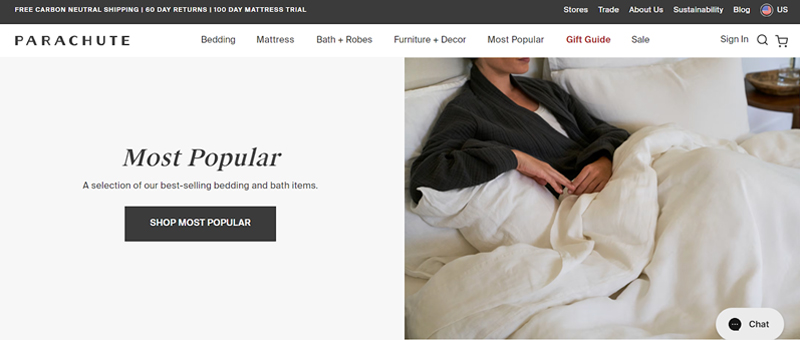
Image Source: parachutehome.com
Shipping options
We’ve all had the experience of going to our shopping cart, ready to take the plunge and purchase our new favorite product — only to back out at the last minute because of the unforeseen, and often overly expensive, shipping cost. If I’m told that the product I want will double in price because of shipping costs, you can believe that I’m going to look for it elsewhere.
Here are a few best practices for shipping:
- Be upfront about the shipping costs. Include the prices based on the consumer’s country of origin, or on their zip code if shipping only within the US.
- Don’t sell yourself short — shipping can be expensive — but don’t overestimate, either.
- Combine shipping costs whenever possible.
- Consider offering free or discounted shipping when the consumer purchases a certain amount.
- Be open to communication from the consumer, and consider individual circumstances whenever possible. You may have a customer who wants to make repeated, extensive purchases from your shop. In such a case, offering a special deal on shipping costs may be more effective for your business than simply sticking with the stated prices.
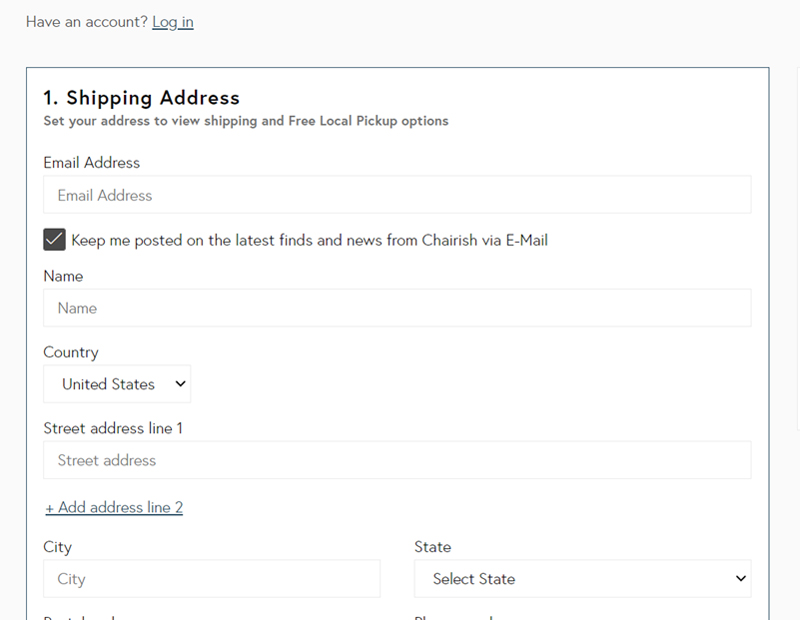
Image Source: chairish.com
Customer reviews
Finally, an important component to consider for the best UX for your Shopify site is simply this: encourage feedback, and make it accessible for all.
Customer service is one of the main make-or-break factors for any store, in person or online. A chief factor of good customer service is communication. This means not only encouraging your customers to speak up about what they did and didn’t like about the process of buying from your shop — as well as about the products themselves — but also replying to every comment in a friendly, helpful, and respectful way — even if the original comment itself didn’t fit any of those categories.
People pay close attention to customer reviews, and they can tell when they’re posted by genuine customers, too. Curating your reviews so only the most positive five-star feedback appears on your site is disingenuous; you may want to ensure that five-star reviews show up at the top of the page, but don’t go out of your way to quash any negativity. Instead, use it as a brand-building experience by showcasing your good customer service and how far you’ll go to make things right.
Shopify marketing

Image Source: snowehome.com
Wrapping Up
Ultimately, the user experience will differ with every person who visits your Shopify site. We’re all individuals, after all. But with care and attention to detail — and to these top ten components for good UX — you can rest assured that you’ve done your best to provide a top-notch user experience for every customer. Other than user experience, you also need to focus on pitching your website to the audience and increasing visibility in the digital landscape. With an effective Shopify marketing strategy, you can easily meet all your business and build upon the user experience to create a lasting brand.



